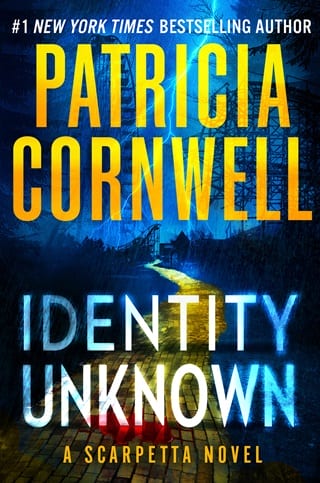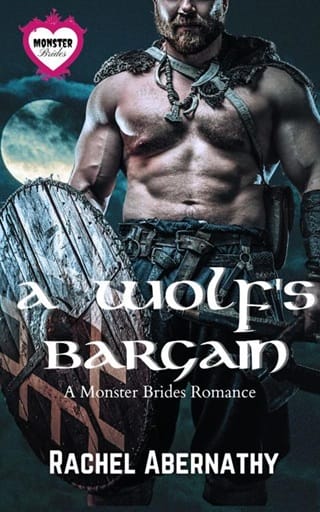Chapter 19
CHAPTER 19
C ompleting the orbit with the x-ray machine, I roll it out of the way. I begin describing the extensive skeletal damage Sal suffered due to blunt force trauma when he hit the ground.
“His right radial and ulnar shaft are fractured, as is the right temporal bone of his skull,” I’m saying. “His right shoulder is dislocated, his hips and pelvis shattered. I’m seeing broken ribs and burst vertebrae, all of it consistent with an abrupt vertical deceleration. Or more specifically in this case, the victim being jettisoned out of some type of flying craft.”
“From how far up, do you think?” NASA Langley asks.
“I’ve examined victims of falls and jumps from high-rises, bridges, water towers, when a skydiver’s parachute fails. They look similar to this, the injuries profound and almost never survivable if the landing is on a hard surface, as it was in this case.” I begin cutting open the plastic body pouches along the sealed seams. “But it’s not possible to know for certain the altitude except that it was a significant drop.”
“Based on the vortex of flattened grass and flower petals, and the height of the trees around the clearing.” Lucy’s voice fills my hood. “I’d estimate the UAP was at least fifty feet off the ground, maybe a hundred. Not much more than that or the propulsion system’s downwash wouldn’t have caused what I saw at the scene.”
“How big was this vortex you’re describing?” the All-domain Anomaly Resolution Office (AARO) asks her.
“Approximately eighty feet in diameter. We have photos and exact measurements taken before the storm. From the air it looked like a pink halo around him.”
“Possibly the result of a coronal discharge from a high-voltage energy source that ionized the air,” the Defense Advanced Research Projects Agency considers.
“The technology is definitely out there but not mainstream.” Space Force’s General Gunner means it’s secret.
“What I can say for a fact is the vortex was caused by something rotating clockwise extremely fast,” Lucy informs us. “It created enough turbulence to strip the nearby apple trees of their blossoms. And when Tron and I first got there we noticed a sort of vinegary odor.”
“Strange,” Bella says. “I wonder what that could have been.”
“It didn’t make any sense,” Tron replies.
“Was this pink halo radioactive?” AARO inquires. “Did anybody check?”
“We used a Geiger counter on the body and immediate area,” I reply. “Nothing unusual was detected.”
“But it had been raining like a mother by the time we got there,” Marino adds.
“That shouldn’t have made a significant difference,” DARPA answers.
“What I’m seeing fits with him having received his injuries early morning, possibly around the time the UAP showed up on radar,” I explain as Marino and I slide the opened pouches out from under the body. “Once he hit the bricks, he wasn’t moving after that. But he survived for a while.”
“Let me make sure this is clear,” General Gunner says to me. “He landed on the Yellow Brick Road in the middle of an apple orchard.”
“Inside the Haunted Forest. Yes.”
“It sure feels like someone giving him the finger,” he says. “Or maybe giving the finger to all of us.”
“How long is a while ?” Bella asks as Marino loudly stuffs bloody plastic into the biohazard trash.
“Several hours, explaining the profound tissue response to his injuries,” I reply. “The longer he had a blood pressure, the worse he was going to look.”
“And there’s no question he was alive when he fell from the sky?” It’s Benton asking.
“He definitely was.”
“That’s important,” he says.
“A totally different scenario,” Gus adds. “Are we absolutely sure of this before you’ve done the autopsy? It’s critical because it speaks to intention.”
“I don’t need an autopsy to know that he was alive for an interval after hitting the ground,” I tell them.
“Stripping someone naked, throwing the person overboard while alive changes the emotionality of the act,” Benton says. “The goal becomes terror. Not only the victim’s but anyone who knows what was done, and we’ve seen this before.”
“ Vuelos de la muerte . Death flights. Unfortunately, they’re nothing new,” Gus agrees. “During Argentina’s Dirty War thousands were killed in a similar fashion.”
“The MO’s always the same,” Benton explains. “Once on board the aircraft the victims were stripped of their clothing and all personal effects. They were drugged into compliance before being pushed out over an ocean, a river, the mountains, where they’d most likely never be found.”
“Also a Russian specialty, and at various times practiced by the Japanese, the Indonesians, the French, the Colombians,” Gus adds. “Typically, the hostages are first injected with an anesthetic like Pentothal.”
“Known as truth serum in the old days,” says the NSA.
“And used in executions by lethal injection,” I inform them. “Sodium thiopental isn’t made in the U.S. anymore, but we’ll screen for it and other drugs.”
“It’s estimated that between the late seventies and early eighties, tens of thousands of people were disappeared in this fashion,” Gus goes on. “Death flights, poisonings, prison camps, torture, mental asylums create fear and destabilization that lead to a collapse of civilized society. It plays right into the hands of ruthless dictators.”
“Except the body was found in this instance,” Marino reminds everyone. “There wasn’t much of an effort to disappear it. No matter what, it would have been found eventually.”
“The goal isn’t to conceal what happened to Sal Giordano, quite the opposite,” Benton says. “The point is the ruination of any semblance of peace of mind. The very thing that terrorists like Carrie Grethen are gifted at.” He brings her up and I’m not surprised.
“I understand we don’t know where she is,” I reply, watching Marino’s reaction to the news.
“What the fuck?” he says under his breath. But I hear his amplified voice fine, as can everyone else.
“We lost track of her in December and don’t know where she is right now.” Benton has no expression on his face but I sense the contempt he feels for her. “However, we have an idea what she’s been doing.”
“Starting with Russia’s role in Israel’s war against Hamas and the resulting global mayhem,” Interpol says. “The Kremlin has provided material support to that terrorist organization and others in part to sow chaos.”
“And to pull the U.S. into another war in an ongoing effort to weaken us,” General Gunner says.
“Then Carrie Grethen could be in the Middle East,” Marino suggests.
“Or she may still be in Russia,” the CIA’s Gus Gutenberg replies.
“Or here,” I add.
“We simply don’t know,” Gus says.
“How the hell could you let that happen?” Marino yanks off his soiled outer gloves, throwing them into the trash. “Jesus Christ! The entire U.S. government can’t keep their eye on one person? And now she could be here? In Virginia? Even as we speak? Like we need to worry about that again?”
“Nobody let it happen,” Lucy says. “When she decides to go dark, that’s what she does. She’s invisible when she wants to be.”
“Let’s be reminded of a few facts.” Marino works his gloved hands into a new outer pair. “There are plenty of stories about people and livestock being dropped out of UFOs, UAPs, flying disks, whatever you want to call them.”
“Endless stories and no credible evidence,” says AARO.
“It’s easy to blame Carrie Grethen for everything,” Marino continues. “Well, unless she’s got access to a UFO that can beam people up while they’re driving, then maybe we should be looking for something else.”
“Nobody’s said anything about people being beamed up.” AARO again.
“You want to explain how his truck went off the mountain with no one in it and the engine running, the doors locked and the seat belts still fastened?” Marino argues.
“Wouldn’t be all that hard to stage in an old pickup truck like that,” Lucy says.
“Seat belts as in plural?” Bella’s voice inside my hood sounds perplexed.
“Those in the front seats,” Lucy tells her.
“Did he have someone with him at the time?”
“Not that anyone knows of,” Lucy answers. “When he was witnessed getting into his truck and driving out of the restaurant parking lot after dinner, he appeared to be alone.”
“At eight-thirty, it would have been dark,” Bella replies. “Maybe the witness didn’t get a good look.”
“What witness are we talking about?” Marino asks.
“His astronomer friend Marie Rao walked out with him to the parking lot.” Benton offers a detail I didn’t know. “They talked by her car for a few minutes, and then he got into his truck and drove away as if everything was normal. The restaurant has a hardwired security camera covering the parking lot. We’ve got it on film.”
“It would be helpful to see that,” Marino replies, and it’s sickening to imagine what Benton just described.
It sounds like Sal had a pleasant time with his colleagues, and then what? Who else saw him drive away and perhaps followed? I pick up a large syringe, signaling I’m getting started.
“First, I’ll draw blood from the femoral artery in the upper inner thigh.” Inserting the ten-gauge needle, I pull the plunger, the unoxygenated blood dark red. “The number one priority is to confirm identity with DNA.” I begin filling test tubes. “The sooner the better, as I worry about the news getting out before we can inform his next of kin.”
Placing a tube of blood in a plastic carton, I instruct Marino to set it outside the door. He’s to spray everything copiously with disinfectant. Whoever picks up the evidence needs to have on appropriate PPE, I tell everyone, and Tron leaves the observation area.
“Based on his x-rays, he didn’t land feetfirst.” I begin to explain what else I’m seeing.
“Is that significant?” Bella asks.
“If people are conscious during a fall, the theory is that they’ll try to right themselves and land feetfirst,” I reply. “It’s instinct to protect the head. But the way someone lands depends on many things, including what position the person was in to begin with and what happened on the way down. He has a hematoma across the middle of both thighs from striking something hard before hitting the ground.”
“How do you know it happened before he hit the ground?” DARPA asks.
“Because the injury occurred not long before death but doesn’t correlate with anything I saw at the scene.” I swab the dark red contusion. “I can see four evenly spaced identical perpendicular scrapes, a pattern of some kind.”
“Definitely not a tree branch,” Bella says.
“And it wasn’t made by the bricks under him,” I answer as Marino places the ruler next to the injury in question, taking photos.
“Maybe he hit some part of the UAP on his way down,” General Gunner suggests. “Part of a landing gear or other structure.”
“My question is whether he was conscious when he was pushed overboard,” Bella says. “You’re telling us that he was alive. But was he aware?”
“I can’t answer that yet, and we may never know.” Using a hand magnifier, I look at debris in tangles of long gray hair.
I adjust the surgical light as I check the neck with the magnifier, noticing a barely visible tiny reddish dot below the left ear. A puncture wound that looks fresh, I inform everyone.
“Likely made by a hypodermic needle,” I add. “Possibly he was injected with something.”
“Explaining how he was subdued,” Benton decides. “He may have encountered someone on the road who injected him in the neck with some type of sedative.”
“We’ll see what toxicology has to say.” I check other skin surfaces, finding three puncture wounds in the fold of the left arm, and two more on the left buttock. “We’ll run samples in our labs while you run them in yours.” I meet Benton’s eyes as I say this, silently reminding him that we agreed to share the evidence.
I ask if there might be a set of forensic lights handy, and Lucy directs Marino to the top shelf of a cabinet. He lifts out a plastic case, opening it on the countertop. Inside are what look like six small black flashlights, each a different wavelength.
“Now I’m going to collect trace evidence, which literally refers to traces of things we can’t see with the unaided eye,” I explain. “We’ll see what fluoresces. Dust, fibers, body fluids.”
I select the ultraviolent light, turning it on, the glass lens glowing purple. Turning off the surgical lamp, I put on a pair of orange-tinted glasses.
“You’re going to be in the dark for a few minutes,” I apologize to our audience, flipping a wall switch, everything blacking out.
I begin painting the UV light over the body, amazed as something lights up cobalt blue, a residue as fine as dust. It adheres everywhere except the bloody wounds, suggesting it isn’t from the ground where Sal was found. It was transferred from somewhere else before he was dropped out of the sky. Using the adhesive side of Post-its, I begin collecting anything clinging to hair and skin.
As I work in the dark I describe what I’m doing while Marino continues taking photographs, holding an orange filter in front of the camera lens. He’s on one side of the table and I’m on the other, and I can make out his bulky shape as the camera’s flashgun goes off. In the purple glow of ultraviolent I label the small yellow Post-it squares, tucking them into white paper envelopes.
“The most telling evidence likely will be what we discover has been transferred to the body from various locations,” I’m saying as I continue exploring with the UV light. “Of interest is any conveyance he was in, including the UAP that seems to be involved. But most of all where he was held hostage.”
“How long are we thinking?” Bella asks.
“We know he left the restaurant last night at around eight-thirty and never made it to the lodge.” It’s Benton who answers. “And the UAP was detected near the Oz theme park at six this morning. That’s the time frame.”
“He was held somewhere for as long as ten hours?” Bella asks. “How dreadful.”
 Fullepub
Fullepub 



